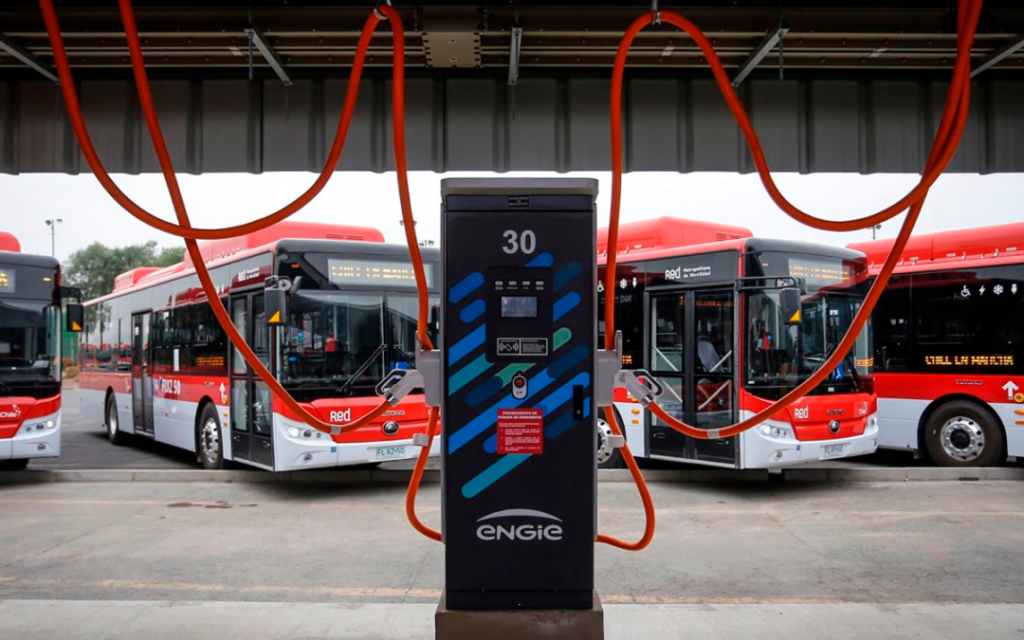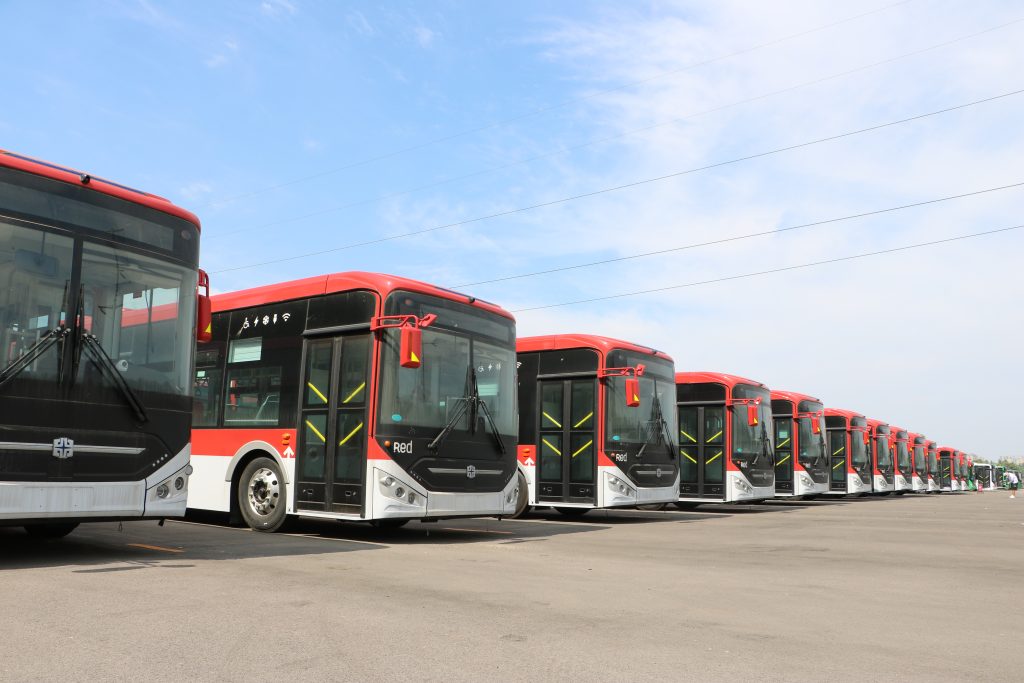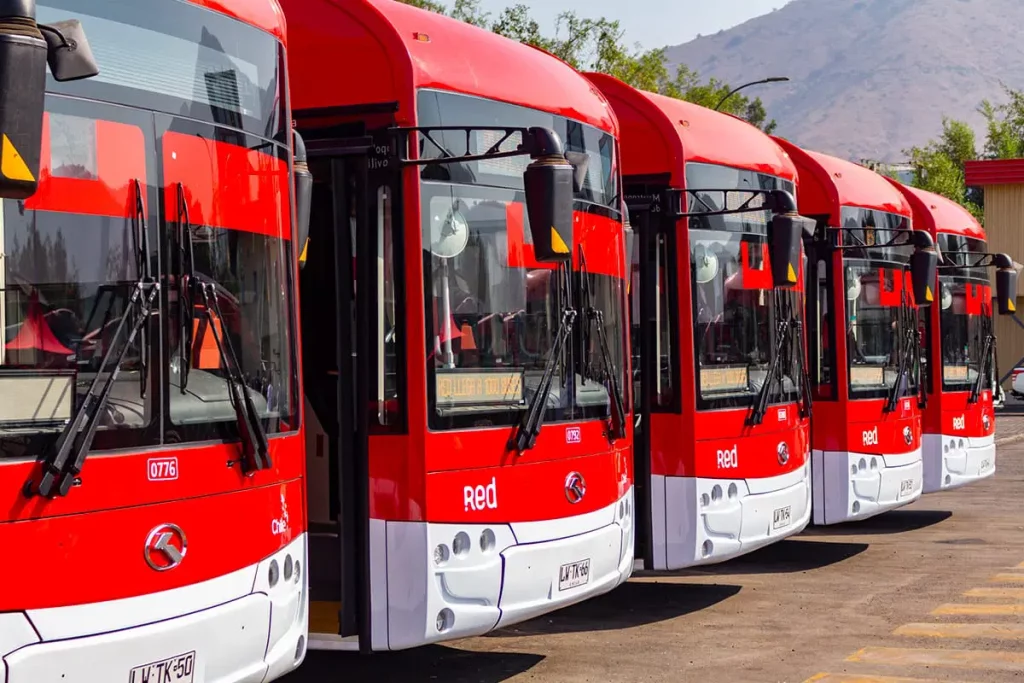Santiago de Chile took another leap forward in August with the addition of 176 electric buses to the RED Movilidad network, replacing diesel units and extending coverage with new routes and improved frequency.
With this milestone, the system consolidates a 2025 marked by successive deliveries of zero-emission fleets that raise the standard of travel (air conditioning, cameras, Wi-Fi) and reduce noise and particulate matter in the capital.
The expansion is not isolated. In early August, the Metropolitan Public Transportation Directorate (DTPM) reported that the network reached 2,684 electric buses in operation, following new launches in the southern part of the Metropolitan Region.
The government’s goal is to add 1,800 additional electric buses between July 2025 and March 2026, consolidating the capital’s regional leadership in zero-emission fleets.
The pace of renewal had been strong since the first half of the year: in June, the gradual arrival of 300 electric buses had already been announced, along with a plan for nearly two out of every three buses in the system to be zero-emission by the end of the renewal cycle in early 2026.
This push combines fleet acquisition with new electric terminals and tenders in regions, which anticipates a dynamic second half of the year in logistics and operations.

You may also be interested in: Voltway Drives the Conversion of Gas Stations into Electric Charging Centers in Mexico
Copiapó: Pioneer in South America
The Atacama Region will be at the forefront of a historic milestone for electromobility in Latin America. Copiapó will become the first city in South America to operate a fully electric public transport system, a pioneering model that will set the standard for other medium-sized cities in the region.
The project aims to completely renew the fleet with 121 electric buses that will cover 12 routes, which, in addition to reducing emissions and noise pollution, are estimated to benefit more than 25,000 users daily.
The initiative was awarded in early 2025 and is supported by the Ministry of Transport and Telecommunications (MTT), in coordination with the private sector. The buses, manufactured in China, began shipping in June and are expected to enter into operation during the last quarter of the year.
The plan also includes the construction of an electric terminal at the Copiapó Terrapuerto, equipped with more than 30 high-power chargers and an installed capacity of 4.5 MW, sufficient to meet the fleet’s demand.

Copec Voltex will be the company responsible for powering this infrastructure with 100% renewable electricity, while the Kupos platform will manage the operation of the buses in real time, ensuring efficiency and continuity of service.
With Copiapó as a pioneer, Chile is reinforcing its strategy of decentralizing electromobility and bringing it to the regions, demonstrating that the energy transition is not limited to Santiago and that medium-sized cities can be laboratories for innovation in public transport.
More Public Coverage and Greater Installed Power
The public charging network also accelerated. According to the Ministry of Energy and the Superintendency of Electricity and Fuels (SEC), Chile exceeded 1,170 publicly accessible charging points by the end of June, closing May with 1,214 registered points, a jump compared to 2024.
At the same time, the focus shifted from quantity to available power: during the first half of 2025, installed public power approached 59 MW, nearly double the previous year, enabling faster and more robust charging for cars and fleets.
In addition to urban expansion, there are interurban corridors and private deployment in retail, offices, and homes.
For its part, the Ministry of Energy’s EcoCarga app centralizes the location and characteristics of public chargers, which today combine AC and DC and range from semi-fast outlets to high-power chargers suitable for >250–300 kW.
This diversification allows the ecosystem to absorb the growth of light electric vehicles and, increasingly, commercial fleets.
Automotive Market: Record Number of Electric Vehicles
The Chilean new vehicle market showed traction in 2025: ANAC reported 145,628 light and medium-sized units registered in the first half of the year (+2.2% year-on-year), with particular momentum in zero- and low-emission technologies.
Within that universe, electrified vehicles totaled 14,795 units between January and June: 11,038 non-plug-in (HEV/MHEV/EREV) and 3,757 plug-in, broken down into 2,537 BEVs and 1,200 PHEVs.
In just six months, Chile sold 77% of all electric vehicles registered in the whole of 2024, evidence of a structural change in demand.
By brand and model, the leadership was clear:
- In non-plug-in vehicles, Suzuki led with 3,820 units in the first half of the year, driven by the micro-hybrid family, with the Fronx (1,767) and Swift (1,216) as spearheads, followed by Toyota and Peugeot.
- In plug-in vehicles, BYD dominated with 909 units and placed several of the best-selling models, while Volvo and Tesla strengthened their offerings in SUVs and sedans.
- Among 100% electric vehicles, the BYD Shark GS (300), Volvo EX30 (278), Tesla Model Y (260), and Model 3 (223) stood out.
- In the mass market, the Renault Kwid E-Tech (147) and BYD Dolphin Mini (169) further democratized urban BEVs.
The sectoral reading is clear: the combination of electric public fleets, more charging points and power, and a wider and more affordable range of models is increasing the propensity to purchase, both in households and businesses.
Infrastructure providers, from utilities to specialized operators, anticipate new investments in charging hubs for fleets and logistics corridors, reinforcing the country’s capillarity.

Chile Welcomes Global Leaders in Sustainable Mobility
On August 26 and 27, 2025, Santiago will host “Latam Mobility Cono Sur 2025,” a meeting that will bring together government, business, technology, and academic leaders to address the deployment of electric fleets, the expansion of charging infrastructure, energy management, and new value chains for sustainable mobility.
The meeting will be a platform for networking, knowledge, and regional collaboration, where government, business, technology, and academic leaders will converge to design real solutions to climate change and urban transformation.
With more than 700 key players expected to attend and a cross-cutting agenda, from public transportation and logistics to micromobility and financing, it will be the place to learn about current events, challenges, and perspectives in the southern part of the continent.
If you work in fleets, infrastructure, energy, cities, or public policy, now is the time to connect. See you in Santiago to chart, together, the next phase of electromobility in the Southern Cone.
For more information on how to participate in “Latam Mobility Cono Sur 2025” and positioning options, please write to info@investinlatam.org.
Contact is also available via WhatsApp, and you can purchase your tickets by clicking here.








